Marine biologists develop portable kit to preserve coral DNA at sea
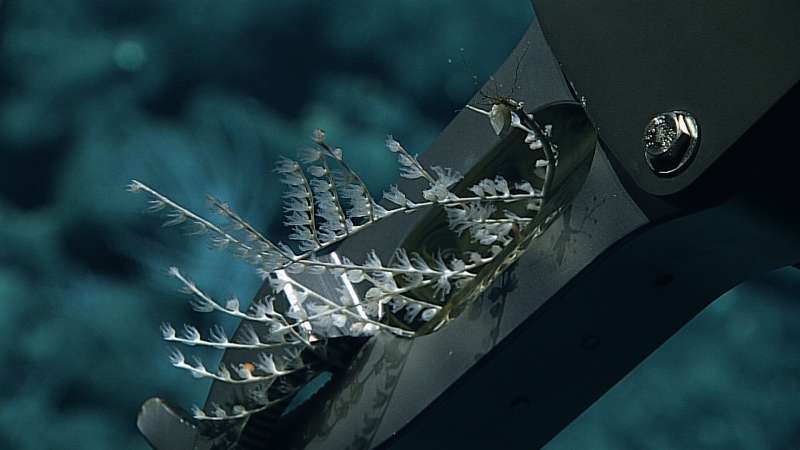
It's Welcome Week, but not just for students at Northeastern's Boston campus. The doors have also opened for species of a different order: deep-sea corals and spiny sponges from remote northwest Hawaiian waters. Samples of the organisms will arrive via the ship Okeanos Explorer in a collaboration between Northeastern's Marine Science Center and the National Oceanic and Atmospheric Administration. (For a peek into the depths, see the slideshow below.)
The Okeanos Explorer's "Hohonu Moana" expedition, which began in July and continues through September, marks the first time the ship's scientists are collecting biological samples for analysis, having focused in the past on radar and sonar mapping of the sea floor.
This would not be possible without a new portable-laboratory kit developed by scientists from the Marine Science Center's Ocean Genome Legacy, which is led by research professor Daniel L. Distel. The kit extracts tissue and preserves the samples' DNA in record time, permitting the scientists to archive large amounts of the precious genetic material, which can reveal important information about the evolutionary relationships among species, including ourselves.
"DNA contains a record of an organism's ancestry and history," says Distel. "And so it tells us a lot about where an organism comes from, what it's capable of doing, and what its vulnerabilities might be. That's extremely important for wildlife management and also understanding our own biology: We learn about our own functions and capabilities by comparing our evolutionary pathways—our genes, our biochemistry—to those of different organisms."
OGL in a Box
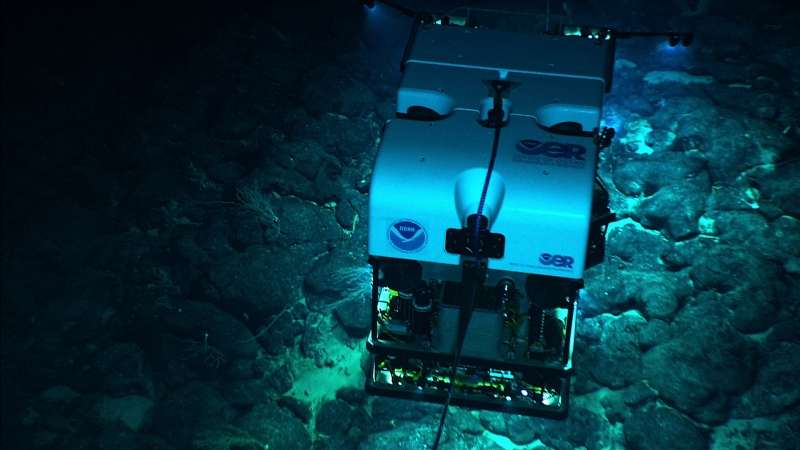
The dilemma was how to collect enough DNA to make significant comparisons, and ensure that it didn't degrade over the months the Okeanos was at sea.
Enter OGL staff scientist Charlotte Seid and research technician David Stein.
The ship's Remotely Operated Vehicle, Deep Discoverer, could do the heavy lifting: it trolls the ocean floor, extending an arm to grab branches of coral here, bunches of sponges there. The device requires such intricate maneuvers that land-bound scientists watching the expedition on live video joked that its pilots must snap up all the toys in machine-claw arcade games.
It was Seid and Stein's job to take the retrieved samples to the next level: extract the tissue off snippets of the samples and preserve the DNA within for analysis. Their solution: A compact portable kit with all the components necessary to do both tasks.
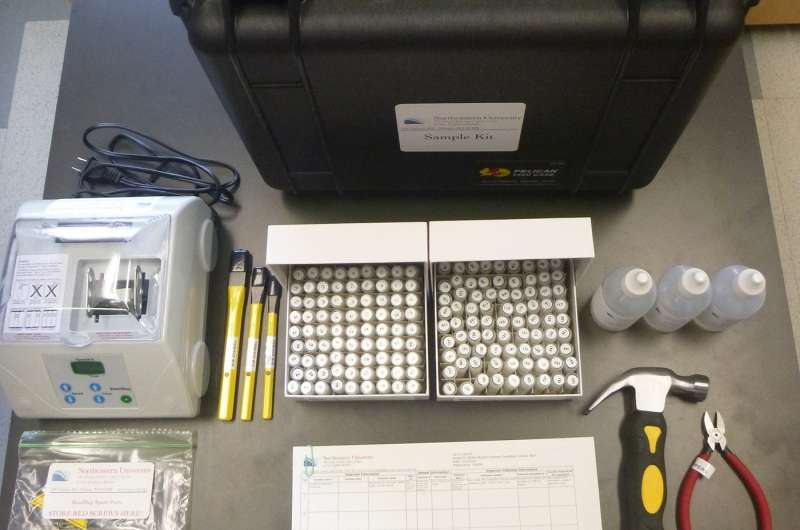
"Coral is essentially a stony skeleton with a very thin layer of biological material on it," says Seid. That layer "contains the cells and the DNA that are really valuable to us." But preserving DNA from coral is a challenge, she adds, it's almost like working with "a layer of slime on a rock."
To separate the two, the researchers introduced the "star feature" of the kit: an off-the-shelf electrically operated machine called a "homogenizer" that vigorously shakes three tubes filled with a liquid buffer and tiny beads that rub against the coral and scrape the DNA-containing material free.
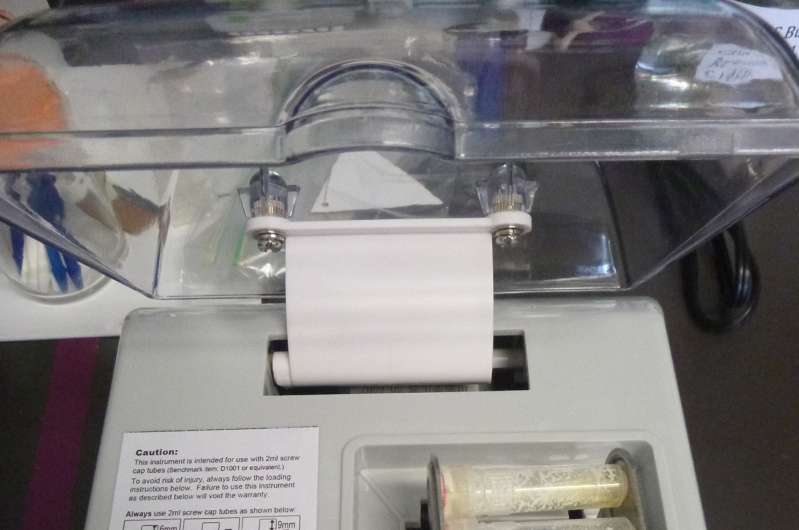
"The protocol is where the magic happens," says Seid. Over a week's time and drawing from their and collaborators' past experience, the pair experimented with various parameters: how fast and how long to shake the tubes, which beads to use (they chose zirconia-silica beads), and what chemicals to mix in the buffer. Other supplies packed neatly into the foam-lined case include clippers, chisels, a hammer, waterproof data sheets, and a laminated instruction sheet.
In early October, those tubes—up to 162 of them—and their precious cargo will make their way to OGL and the Smithsonian Institution for analysis, including confirmation of the species of each sample. "The DNA identification reveals things you can't see by eye," says Seid. "Organisms that look similar may have actually evolved very differently or have subtle differences at a molecular level. That can tell us a lot about the changing environment and how species adapt."
-
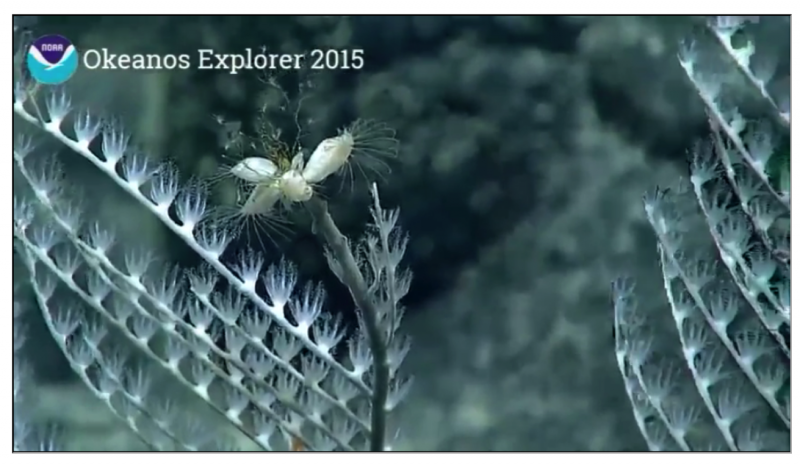
Chrysogorgia soft coral attracts hitchhiking gooseneck barnacles. Credit: NOAA Office of Ocean Exploration and Research -
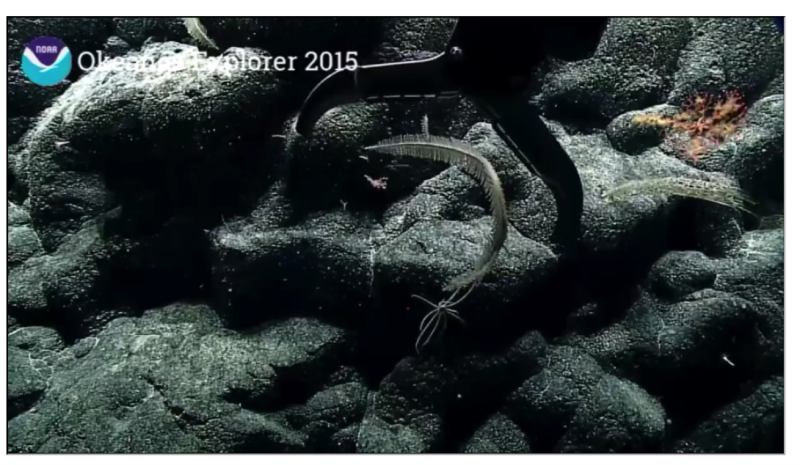
The ROV's robotic arm captures a sample of black coral. Credit: NOAA Office of Ocean Exploration and Research -
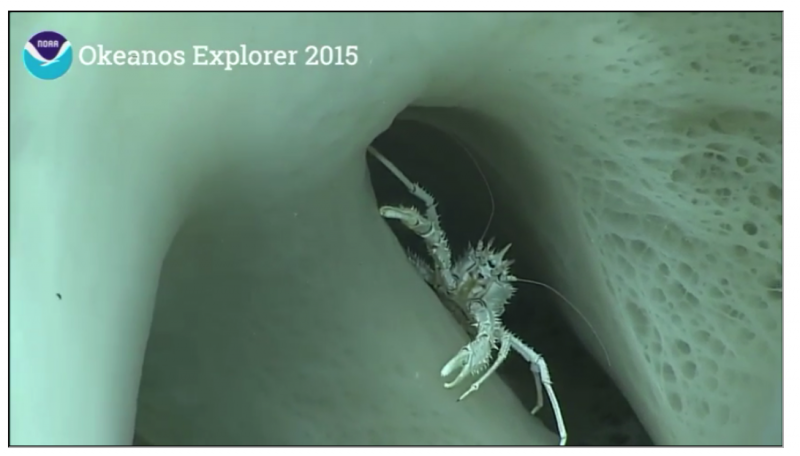
A squat lobster surveys the scene from a perch inside a sponge. Credit: NOAA Office of Ocean Exploration and Research
Provided by Northeastern University




















